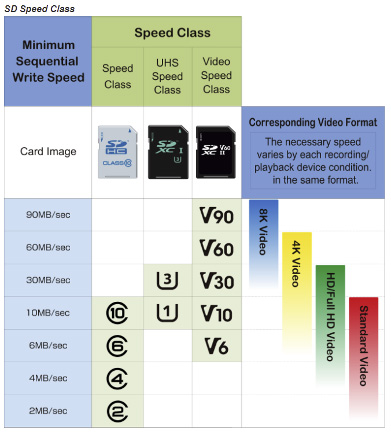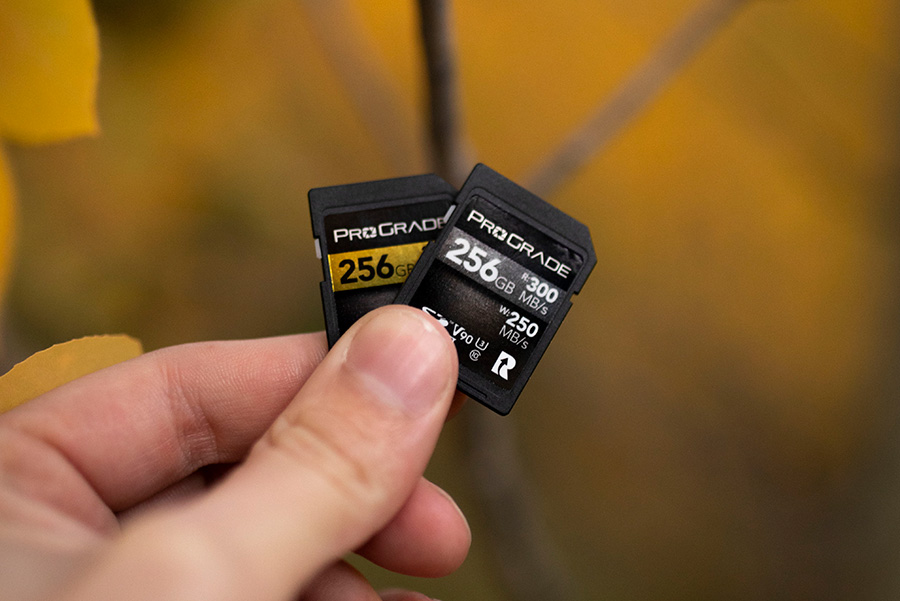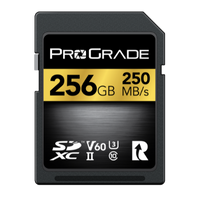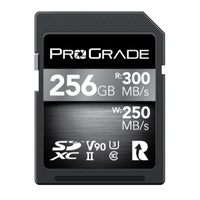Comparing memory cards that are a million miles apart is relatively easy. Differences between SD cards that use the UHS-I bus or the UHS-II bus are pretty clear. Choosing one card over the other when differences between them are barely noticeable can quickly become overwhelming. This might be the case when comparing V60 and V90 SD cards. Some photo and videographers incline firmly toward one or the other, while others have no idea which is right for them.
ProGrade Digital doesn’t manufacture consumer-grade memory products like UHS-I SD cards or the slower V30 cards. The company is focused only on SD V60 and V90 cards since they both meet the demanding needs of today’s photographers and cinematographers. We want you to be able to choose the one that serves you best, and we hope this article helps you do that.
First, let’s take a look at how these two cards compare with one another so you will have all the necessary details to decide whether it makes sense to go with a ProGrade SDXC V60 card or should you get a ProGrade SDXC V90 card instead.
These two cards have the same form factor, SDXC UHS-II, not to mention physical dimensions, the ability to withstand extreme conditions, and available capacity options. You can choose between 64GB, 128GB, and 256GB versions. Both cards even have exactly the same ratings in a regular Speed Class and UHS Speed Class. Where they differ, though, is in the Video Speed Class. That is what the V stands for in V60 and V90.

© SD Association https://www.sdcard.org/consumers/about-sd-memory-card-choices/speed-class-standards-for-video-recording/
SDXC V60 cards are tested and certified to operate at a minimum sequential write speed of 60MB/second, while SDXC V90 cards are certified to operate at a minimum continuous write speed of 90MB/second.
These numbers, however, are simply required minimums for certification, and both V60 and V90 ProGrade Digital SDXC cards perform at significantly higher speeds. V60 cards are actually guaranteed to operate at maximum read rates of up to 250MB/second and write speeds of up to 130MB/second. V90 cards can sustain read rates of up to 300MB/second and write speeds of up to 250MB/second.
Nevertheless, you should hardly ever focus solely on the cards themselves when making the decision. Instead of comparing the two and going with the faster one, you should focus on your needs. These usually boil down to three key aspects: camera compatibility, project requirements, and workflow demands.
Camera Compatibility
Camera manufacturers will almost always specify what kind of memory cards are ideal for their models. Knowing the maximum write speed that your camera requires will help you make the best decision. For example, Canon EOS 7D, 70D, and 80D are all compatible with both V60 and V90 cards but do not necessarily need the latter. They will excel with V60 cards.
Canon EOS R5 and R6, then again, should only be paired with V90 cards. The same goes for Sony a7 series cameras.
To determine which card is recommended for your camera, see our comprehensive compatibility guide.
Project Requirements
Most DSLR and mirrorless cameras require V90 cards for recording high-resolution video with a higher bitrate. Usually, everything above 4K UHD asks for a faster card. That said, if you never go beyond 4K UHD, there is no need to go beyond the V60 cards as well.
For shooting stills, ask yourself two questions. Firstly, do you burst RAW? If the answer is no, then go with the V60. If the answer is yes, then ask yourself how quickly do you need the buffer to clear?
Your camera will adapt to the speed of the card. So to maximize the performance of your camera in continuous-burst mode, you should pick the ProGrade Digital V90 card. That is especially the case with fast-action and sports photographers.
Remember, if you are bursting with redundancy, RAW+RAW, or shooting motion+still, you will need a faster V90 card for the second slot as well.
Workflow Demands
Your workflow is also essential to consider when choosing the right memory card. In some cases, even if your projects technically do not need it, you might be better off with a faster card. For example, you might shoot only full HD or JPG but may have a need to transfer files quickly on the set. In those situations, nearly 40% faster data transfer times of V90 cards will come in handy.
Similarly, if you are busy, have short deadlines, and back-to-back shoots that produce an enormous amount of data, then a faster V90 card can be a lifesaver.
Everyone else should not shy away from the ProGrade Digital V60 cards if neither your camera nor projects request otherwise these cards are workhorses that perform above their rated specs
At the end of the day, both the ProGrade Digital SDXC V60 card and ProGrade Digital SDXC V90 card have a solid track record; they are extremely reliable and built to last. So whether you should go with V60 or V90 really comes down to what you need. Once you have that figured out, we have them both waiting for you.





